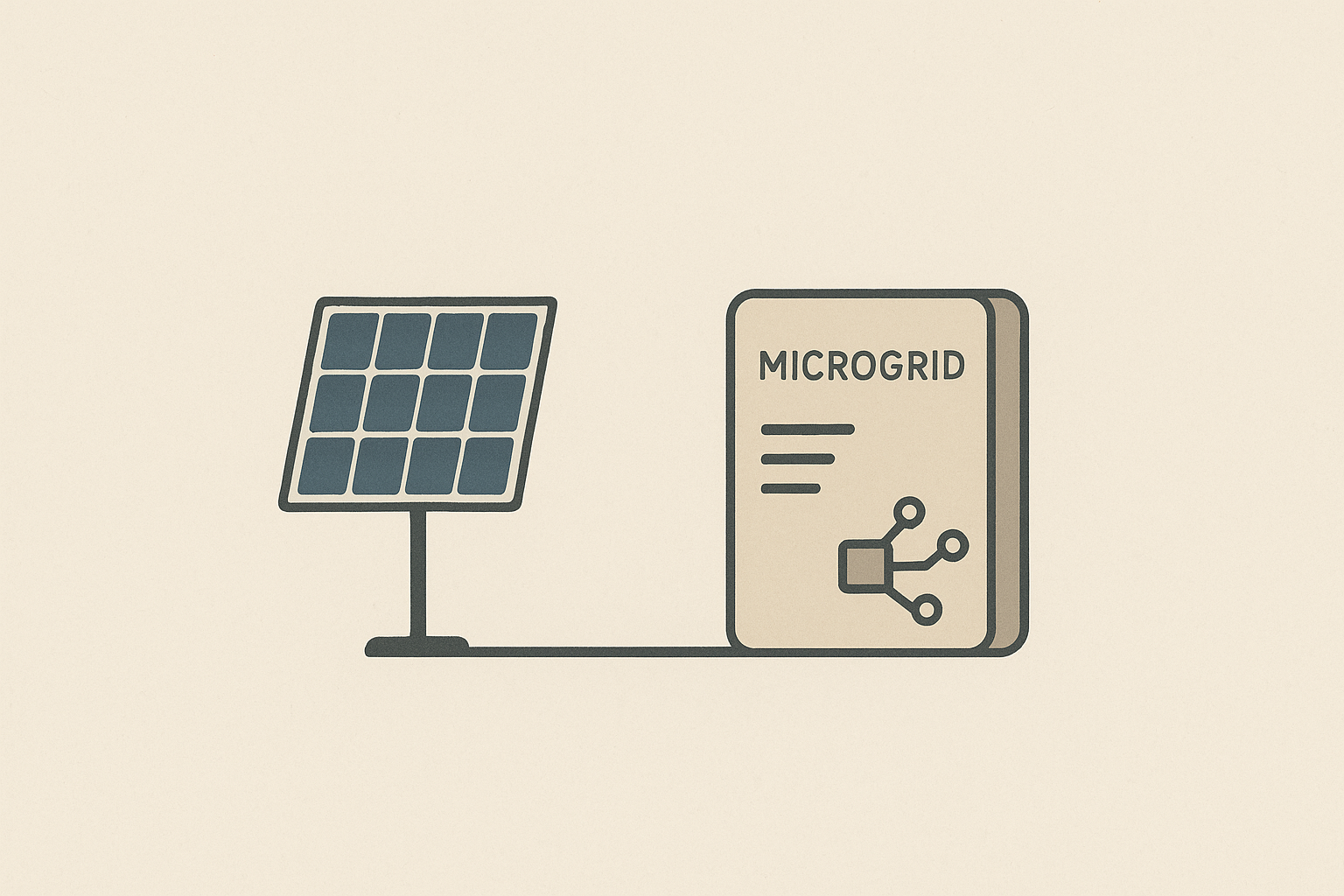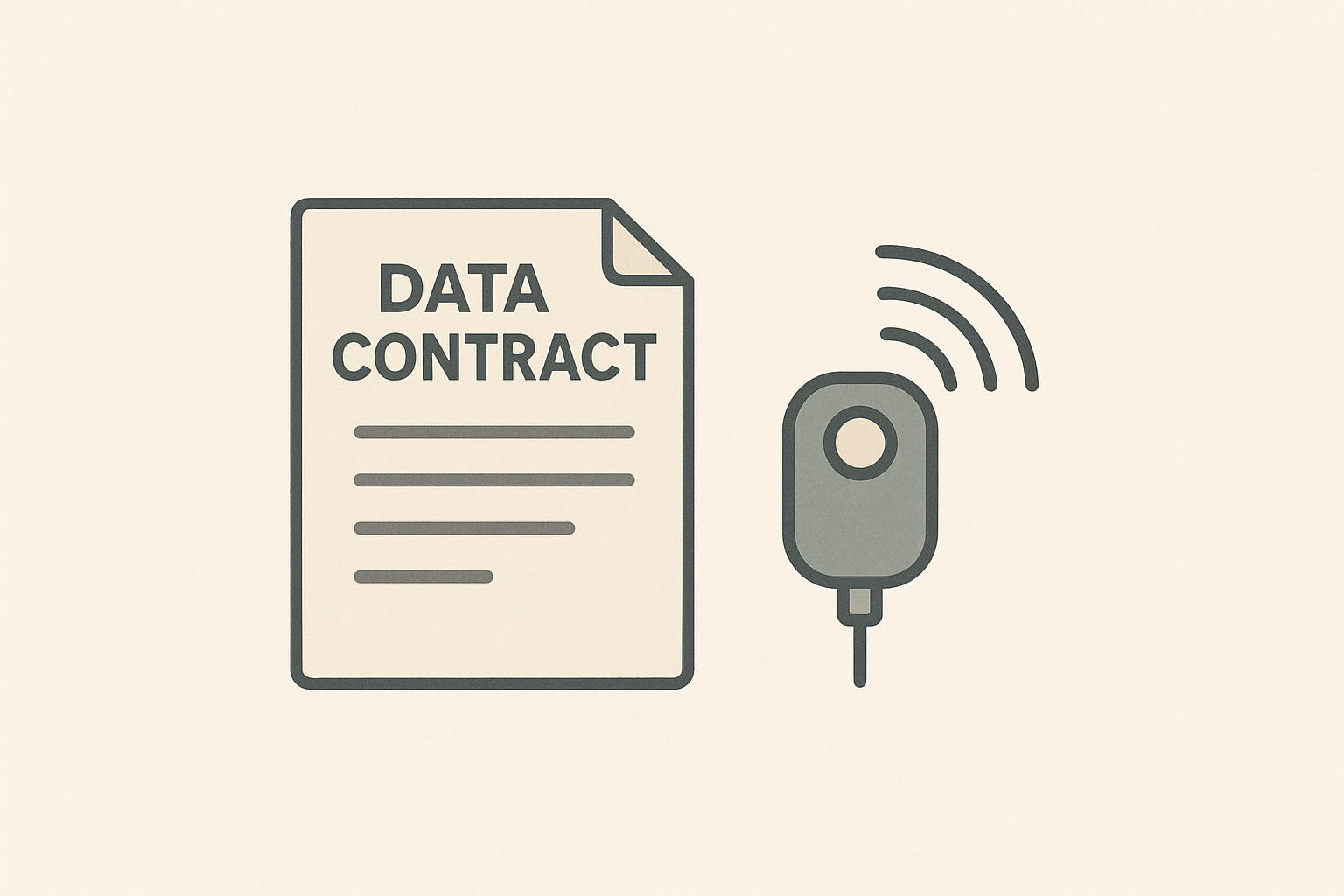Operational Carbon Accounting for Software: A Practical Framework for Developers and Founders
Practical, long-term carbon accounting for software systems: measurement, estimation, and business integration.

Define the Evergreen Challenge
Software businesses and cloud-native products have intangible value, but they still consume physical energy, produce greenhouse gas emissions and create long-term climate risk. Founders and engineering leaders need a repeatable, future-proof method to measure and manage operational emissions from code, infrastructure and products. This is not a one-off sustainability marketing exercise; it is an operational discipline that should sit alongside incident management, cost engineering and security.
This briefing offers a practical, durable framework that covers two complementary solutions: a measurement-first, instrumentation-led approach for engineering teams; and a modelled estimation plus governance approach for founders and product and finance teams. Each solution includes step-by-step implementation guidance, a substantial, production-relevant code example and business-level strategies that stay relevant as technology and policy evolve.
Why a Timeless Approach Matters
Carbon accounting for software must be founded on measurable, auditable data and on repeatable allocation rules so results are comparable across months and years. Policy, pricing and customer expectations will change, so the approach must be modular: measure what you can, estimate what you cannot, and provide transparent assumptions. This is a long-term operational capability that supports compliance, investor diligence and product differentiation.
For conversion factors and authoritative guidance on reporting, rely on official national sources. The UK government maintains conversion factors and guidance for company reporting and better provides reliable, stable baselines for calculations rel="nofollow".
High-Level Principles
- Measure first, model second: where sensors or telemetry exist, use them; where not, use conservative, auditable models.
- Separate scopes and layers: infrastructure energy; data transmission; device and edge energy; embodied emissions are out of scope for initial operational accounting, but capture them for product-level life-cycle analysis later.
- Make allocation explicit: per-service, per-feature, per-customer; define a primary allocation rule and a fallback.
- Keep it repeatable and versioned: store assumptions and conversion factors alongside results in the same system that stores metrics.
Solution A: Measurement-First Engineering Pipeline
This solution prioritises direct measurement and traces emissions back to code paths, product features and customers. It is evergreen because instrumentation patterns and time-series analysis remain relevant even as providers and hardware change.
When to choose this
- Your systems produce detailed telemetry (CPU, GPU, network bytes, storage IO) or you control edge devices with energy sensors.
- You need feature-level or customer-level accuracy for compliance, optimisation or premium pricing.
Step-by-step implementation
- Define measurable signals, for example: vCPU-seconds, GPU-hours, storage-GB-months, network-GB, device-watt-hours.
- Map signals to energy using device or instance power models: energy (kWh) = active_time_hours * average_power_W / 1000. For shared resources, use proportional allocation (CPU-second share, network byte share).
- Adjust for facility overhead using Power Usage Effectiveness (PUE). Use a conservative PUE if provider data is not available, for example 1.2 to 1.6 for modern data centres.
- Fetch grid carbon intensity for the region and time window; use a stable API and persist the values with timestamps.
- Calculate CO2e: emissions_kg = energy_kWh * intensity_gCO2_per_kWh / 1000.
- Store results in a time-series DB or data warehouse with metadata: allocation key, versioned assumptions and conversion factors.
- Expose dashboards and APIs for product, finance and customers; surface the largest contributors and top optimisation opportunities.
Implementation details and considerations
- For cloud VMs, translate billing or monitoring metrics into vCPU-seconds and I/O. Many providers expose per-instance CPU usage and credits; convert these to hours and apply power models.
- For serverless platforms where you cannot measure host power, use provider published resource usage (memory-GB-seconds, invocation count) and published or community power models to estimate equivalent energy.
- Persist the exact conversion factors used alongside computed totals for auditability and repeatability.
Code example: Python pipeline that converts energy measurements to CO2e and fetches UK grid intensity
The following is a practical example for a measurement-fed pipeline. It assumes you ingest energy consumption in watt-hours per interval, and it fetches carbon intensity from the UK National Grid API to compute kgCO2e. Store results to a data warehouse or time-series DB as required.
#!/usr/bin/env python3
# energy_to_co2.py
# Requires: requests
import requests
import csv
import datetime
import json
CARBON_API_URL = "https://api.carbonintensity.org.uk/intensity"
def fetch_intensity(timestamp=None):
"""Fetch nearest carbon intensity (gCO2/kWh) from National Grid API."""
params = {}
if timestamp:
# API accepts from/to ISO intervals; use the hour that contains timestamp
dt = timestamp.replace(minute=0, second=0, microsecond=0)
params['from'] = dt.isoformat()
params['to'] = (dt + datetime.timedelta(hours=1)).isoformat()
resp = requests.get(CARBON_API_URL, params=params, timeout=10)
resp.raise_for_status()
data = resp.json()
# pick the first data point
return data['data'][0]['intensity']['actual'] or data['data'][0]['intensity']['forecast']
def energy_wh_to_co2kg(energy_wh, intensity_g_per_kwh):
energy_kwh = energy_wh / 1000.0
co2_kg = energy_kwh * intensity_g_per_kwh / 1000.0
return co2_kg
def process_csv(input_csv, output_json):
"""
Input CSV should have rows: timestamp_iso, resource_id, energy_wh
Example:
2025-01-01T12:15:00Z,instance-123,450
"""
results = []
with open(input_csv, newline='') as csvfile:
reader = csv.reader(csvfile)
for row in reader:
ts = datetime.datetime.fromisoformat(row[0].replace('Z', '+00:00'))
resource_id = row[1]
energy_wh = float(row[2])
try:
intensity = fetch_intensity(ts)
except Exception as e:
# fallback to a conservative default, 250 gCO2/kWh
intensity = 250
co2kg = energy_wh_to_co2kg(energy_wh, intensity)
results.append({
'timestamp': row[0],
'resource_id': resource_id,
'energy_wh': energy_wh,
'intensity_g_per_kwh': intensity,
'co2_kg': co2kg,
'pue_assumed': 1.2,
'co2_kg_adjusted': co2kg * 1.2
})
with open(output_json, 'w') as f:
json.dump(results, f, indent=2)
if __name__ == '__main__':
import sys
if len(sys.argv) < 3:
print('Usage: energy_to_co2.py input.csv output.json')
sys.exit(1)
process_csv(sys.argv[1], sys.argv[2])
Notes and extensions:
- Replace the CSV input with a stream from your metric pipeline, for example reading from Kafka or Prometheus exports.
- Use provider telemetry to convert CPU or memory usage to estimated watt-hours using power models per instance type.
- Persist intensity values and assumptions alongside results for auditability; do not re-fetch on every read without caching historical values.
Solution B: Modelled Estimation, Governance and Business Integration
This solution focuses on building a robust organisational capability to estimate emissions, allocate them for accounting and integrate them into pricing, product design and corporate governance. It is indispensable for teams that cannot measure everything, or for those who need a single reconciled number for regulatory reporting and investor communications.
When to choose this
- You operate on a mix of third-party managed platforms where you lack fine-grained telemetry.
- You need an audited, reconciled number for finance, regulatory or investor reporting.
Step-by-step implementation
- Define organisational boundaries, choose operational control or financial control approach and document it.
- Identify data sources: cloud bills, provider-reported sustainability metrics, telemetry, upstream vendor statements.
- Select emission factors and conversion tables from a stable authority and version them; for UK reporting, use the government conversion factors rel="nofollow".
- Define allocation rules for multi-tenant services: e.g., allocate by vCPU-seconds, by requests, by revenue share or by active user minutes; document primary and fallback rules.
- Build a monthly reconciliation process: ingest bills and telemetry, run models, reconcile measurement-driven figures with model estimates, produce a single reconciled number and attach metadata.
- Governance and controls: versioned model repository, change approvals, and a carbon steward role that approves methodology changes.
- Integrate with finance: put an internal carbon price on emissions for budgeting, or budget for offsets and efficiency investments from a carbon reserve account.
Business strategies and monetisation
- Carbon-aware pricing, for example offering low-carbon compute regions as a premium option with a surcharge or a sustainable tier with guaranteed lower intensity and traceable offsets.
- Feature differentiation, include carbon dashboards in your product, show customers how their usage translates to emissions and suggest low-carbon alternatives such as scheduled batch windows when grid intensity is lower.
- Internal carbon pricing, use a simple shadow price (for example £50â£200 per tCO2e) to direct engineering decision-making and capital allocation to low-carbon options; update the price annually and disclose it in investor materials.
- Carbon remittance markets, build an exchange or marketplace for verified offset and removals services and integrate them as an optional add-on for customers.
Simple financial example
Assume monthly operational emissions of 100 tCO2e. Using an internal price of £100 per tCO2e, the monthly carbon budget is £10,000. Options:
- Absorb cost, reassign budget from operations to efficiency projects estimated to reduce emissions by 20 tCO2e per month, payback 5 months.
- Pass cost to customers as a small per-seat carbon surcharge; if you have 1,000 seats and want to recover £10,000, surcharge is £10 per seat per month.
- Offer a premium low-carbon tier for £20 extra per seat with access to low-intensity regions and carbon dashboard; if 10% of customers convert, incremental revenue offsets costs.
Operationalising and Scaling the Capability
Both solutions converge when scaled: measurement feeds models; models cover blind spots; governance ensures stability. Key technical building blocks are:
- Time-series store for energy and emissions results, with tags for allocation keys.
- Versioned configuration for conversion factors and allocation rules stored in a repo and exposed via an API.
- Dashboards for engineering, product and finance with automated alerts for anomalies or optimisation opportunities.
- APIs to export per-customer emissions for invoicing, reporting or SLAs.
Product changes that yield sustainable wins
- Introduce carbon budgets per feature and gate feature rollout by carbon efficiency thresholds.
- Offer scheduled processing windows that batch work for carbon-efficient periods; surface to customers the expected reduction if they accept scheduled windows.
- Use feature flags to run experiments with lower-power algorithms and measure direct emissions impacts alongside performance metrics.
Did You Know?
Server CPU utilisation typically correlates with power draw, but idle servers still consume substantial baseline power. Reducing idle footprint often yields a larger carbon reduction than micro-optimisations of busy code paths.
Pro Tip: Persist grid carbon intensity values together with your computed emissions, and never re-run past calculations with updated intensity unless you version the change. Maintain a changelog of assumptions for auditors and investors.Q&A: How accurate must my first model be? Start conservative and auditable. Accuracy improves over time with more telemetry. The goal is actionable trends and repeatability, not perfect per-request grams of CO2 immediately.
Practical Caveats and Long-Term Risks
Warning: avoid double-counting. When you report customer emissions and also purchase offsets, make it clear whether offsets are applied at the organisational level, at the customer level, or both. Ensure offsets are verified and do not claim decarbonisation of supply chains you do not control.
Technical risk: cloud providers may introduce new metering formats and sustainability statements. Keep your ingestion and mapping layer modular so you can adapt new telemetry formats without changing allocation logic.
How this relates to long-lived, sustainable SaaS and edge deployments
Operational carbon accounting supports sustainable product longevity: it informs trade-offs between pushing computation to the edge or centralising it, informs hardware refresh strategies and shapes SLA design. For founders building durable IoT and Edge AI products, this capability complements business design choices; see the practical blueprint in Sustainable SaaS Models for Long‑Lived IoT and Edge AI: A Practical Blueprint for Founders for product-level monetisation and lifecycle thinking that pairs well with operational accounting.
Verification and External Disclosure
As your capability matures, connect with third-party verifiers or auditors and align reporting with established frameworks such as the Greenhouse Gas Protocol for Scope 1 and 2 operational reporting. Keep a public methodology and a technical appendix so stakeholders can verify your approach.
Technology Stack Recommendations
- Metrics ingestion: Prometheus, Vector or Fluentd to capture telemetry; push to Kafka for durability.
- Storage: ClickHouse or InfluxDB for high-cardinality time-series; use a data warehouse for reconciled monthly figures.
- APIs and function layer: Python or Go microservices to compute emissions and expose per-customer endpoints.
- Dashboards: Grafana for technical dashboards; Metabase or a BI tool for finance-level reports.
Governance Checklist
- Document boundary and scopes (operational, control approach).
- Version conversion factors and assumptions in VCS.
- Establish a carbon steward or small cross-functional team to approve changes.
- Publish methodology and reconciled figures quarterly as part of ESG materials.
Evening Actionables
- Inventory: list top 10 energy-consuming services and the telemetry available for each.
- Prototype: run the provided Python script against a week of energy measurements or synthetic watt-hour data to produce a baseline report.
- Policy: decide internal carbon price and allocation rule for at least one product line for a 90-day pilot.
- Dashboard: create a single Grafana dashboard that shows kWh and kgCO2e per service, with PUE and intensity overlays.
- Publish: prepare a one-page public methodology summary to share with customers and investors.
Operational carbon accounting is a long-term capability that reduces exposure to regulatory, market and reputational risk, and it yields direct engineering and product opportunities to reduce costs and differentiate. Begin with measurement where possible, fill gaps with conservative models, and institutionalise the capability with governance and financial levers.





Comments ()